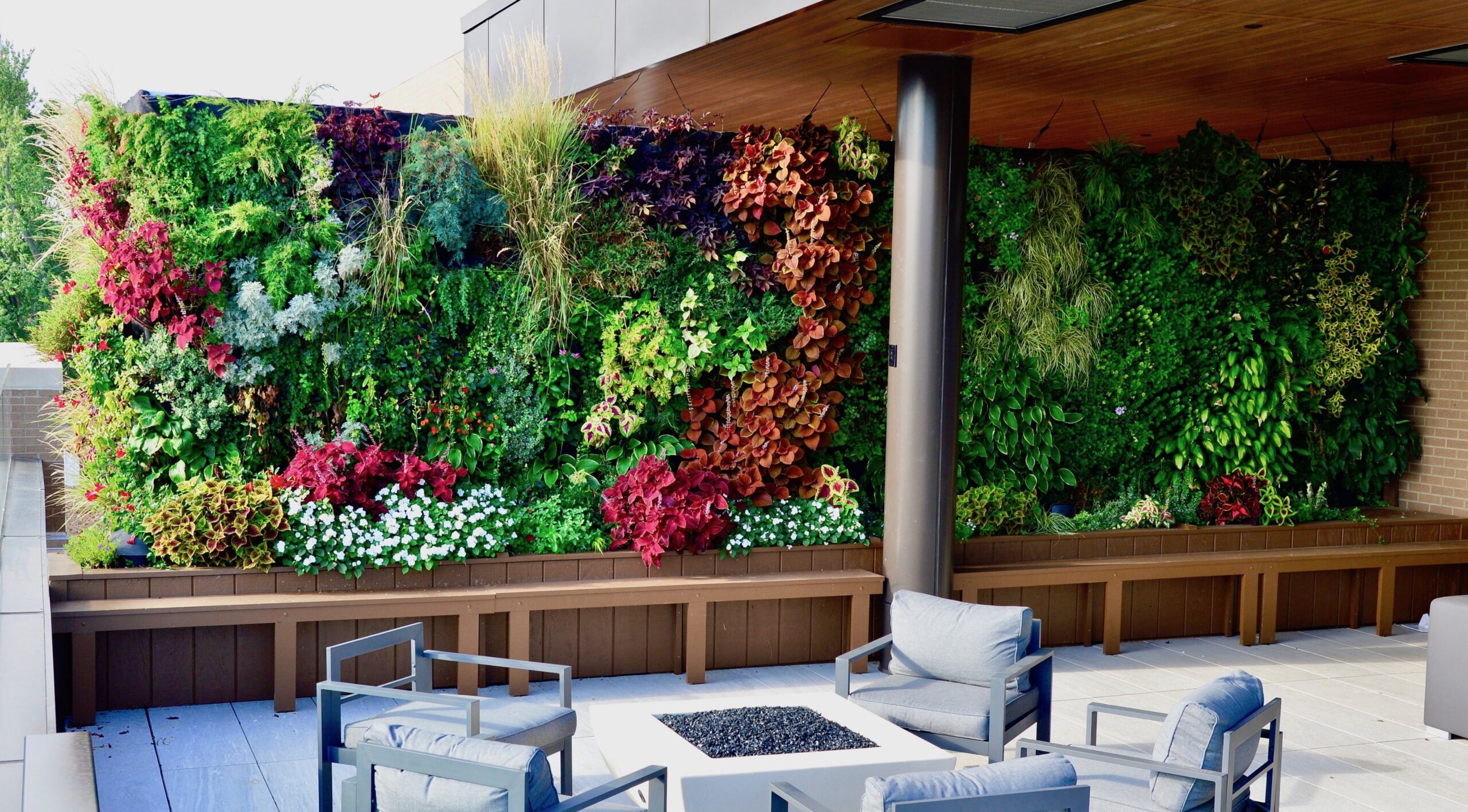
What are The Benefits of Living Green Walls?
Living green walls metabolize harmful toxins while releasing oxygen into the air — much like indoor plants but on a much larger scale. Energy cost reduction. Both interior and exterior living green walls function to cool the air in the warmer summer months through a process known as "evapotranspiration." Exterior living green walls can.

Embassy Suites Denton Natura®
Finally, living green walls that use structural media employ a type of block of soil or growing media that can vary in size, shape, and thickness. Because of the flexibility in the dimensions and shapes of the blocks, the media can be specifically designed to accommodate certain types of plants that require thicker or thinner media. Another.

These Amazing Living Walls Make Us Green With Envy Epic Gardening
A living wall, also known as a vertical garden or green wall, is the ultimate blending of nature and art. It's most often used in grand design gestures, like covering the front of city buildings or for display in commercial spaces, like airports or hotels. While living walls have grown in popularity over the past 30 years thanks to the botanist.
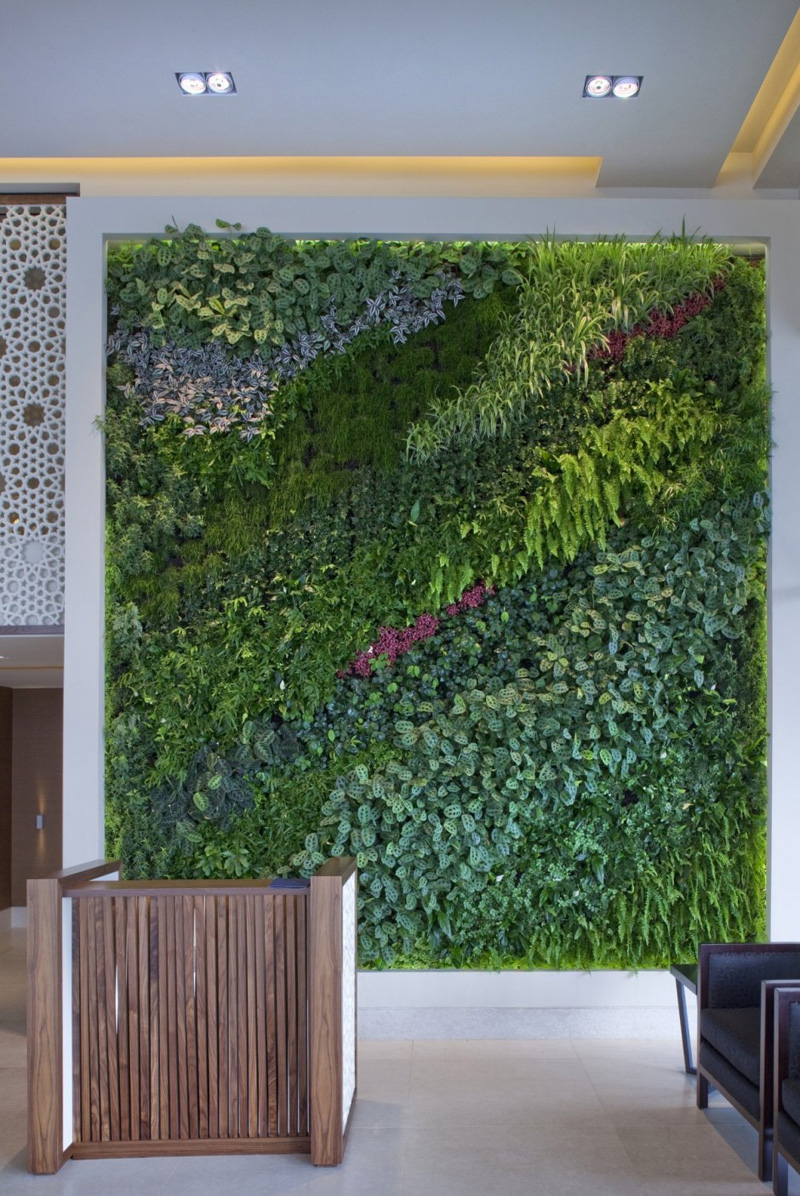
8 Reasons Why Green Walls Are Awesome CONTEMPORIST
Chalky sage green walls are a restful choice for a living space. Pair with botanical design elements and fresh greenery to invite the feeling of nature indoors.

Decorating Ideas For Living Room With Green Walls House Decor Interior
These plants are cultivated 6-8 weeks prior to the installation date. Sagegreenlife's Custom Built-In Living Walls consist of four main components: Studs: Standard 2″ by 4″ wood elements that the green wall attaches back to. Backer board material: This layer is composed of marine grade plywood or PVC board.
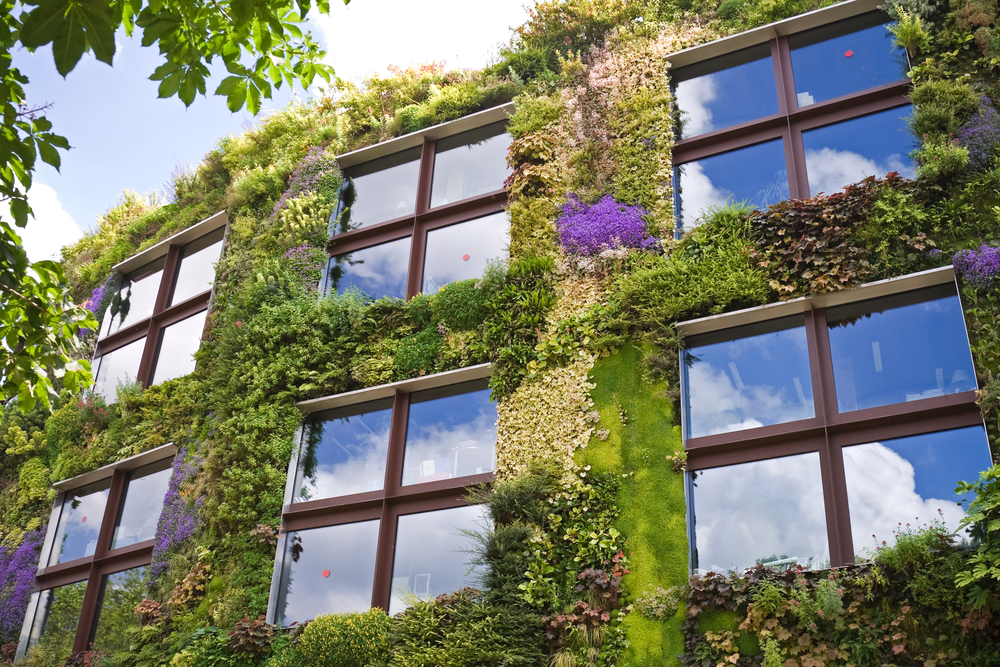
Green Living Walls 5 Cool Benefits + Photos The Green Divas
Living green walls contribute to overall noise reduction by absorbing, refracting, and reflecting sound waves. The result is a more intimate, quiet space that encourages focused energy and creativity. Sustainability & LEED. Leadership in Energy and Environmental Design (LEED) is a rating system devised by the United States Green Building.

Green Walls A Growing Trend
With so many plant varieties, color options, and visual patterns, designing a green living wall may seem like an arduous task. In this video, Dr. Anna Droz shows that this process is actually very simple, intuitive, and a wonderful way to utilize both your imagination and your green thumb! She walks us through each step of the design: from.
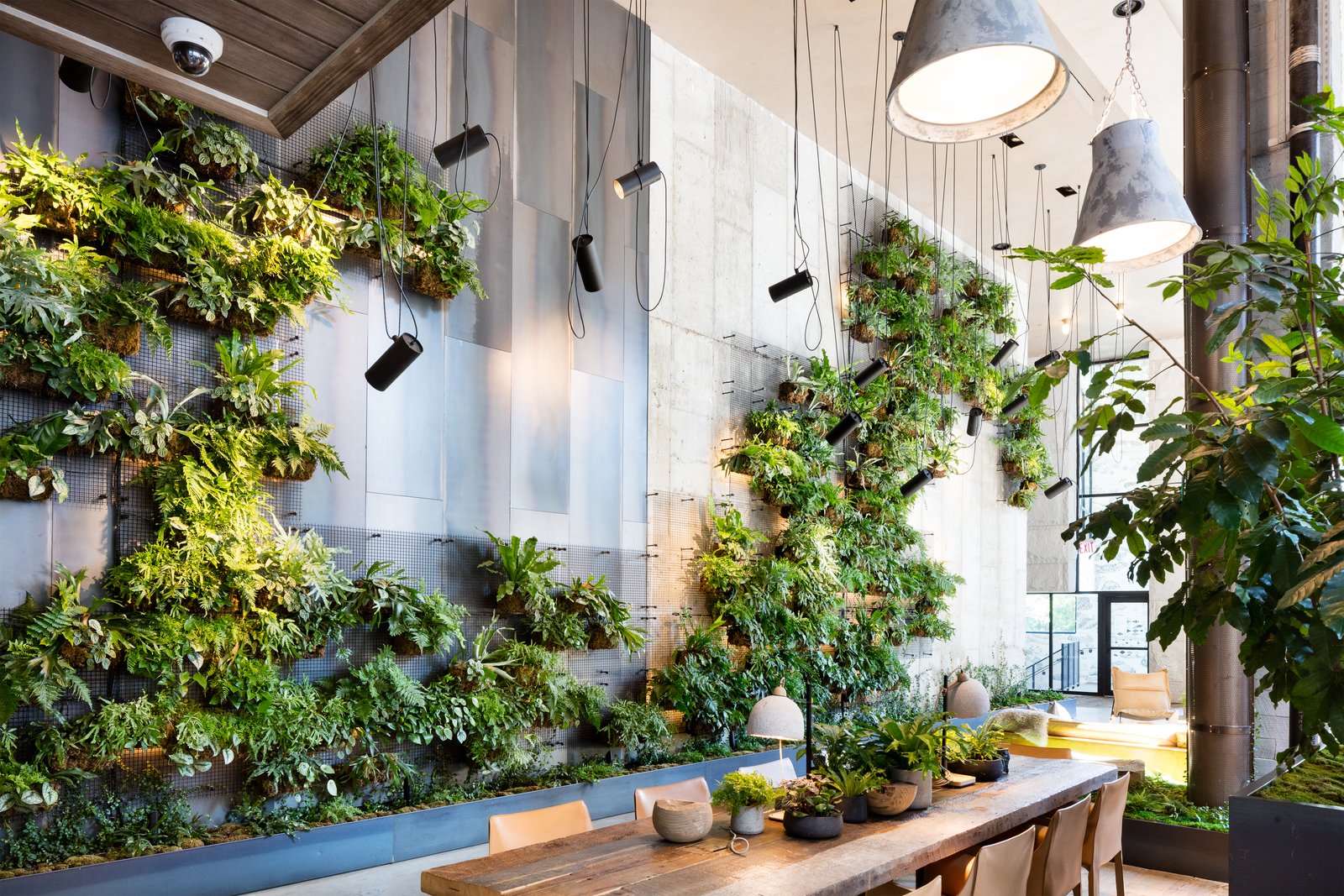
Living Green Walls 101 Their Benefits and How They’re Made Dwell
Health & maintenance of a living wall. Maintenance at work - the higher the wall, the trickier it gets to maintain it. In order to stay healthy to serve their purpose, both green walls and smart and active green walls need upkeep. Like all living plants, greenery in plant walls requires periodical replacements to compensate for plant loss.
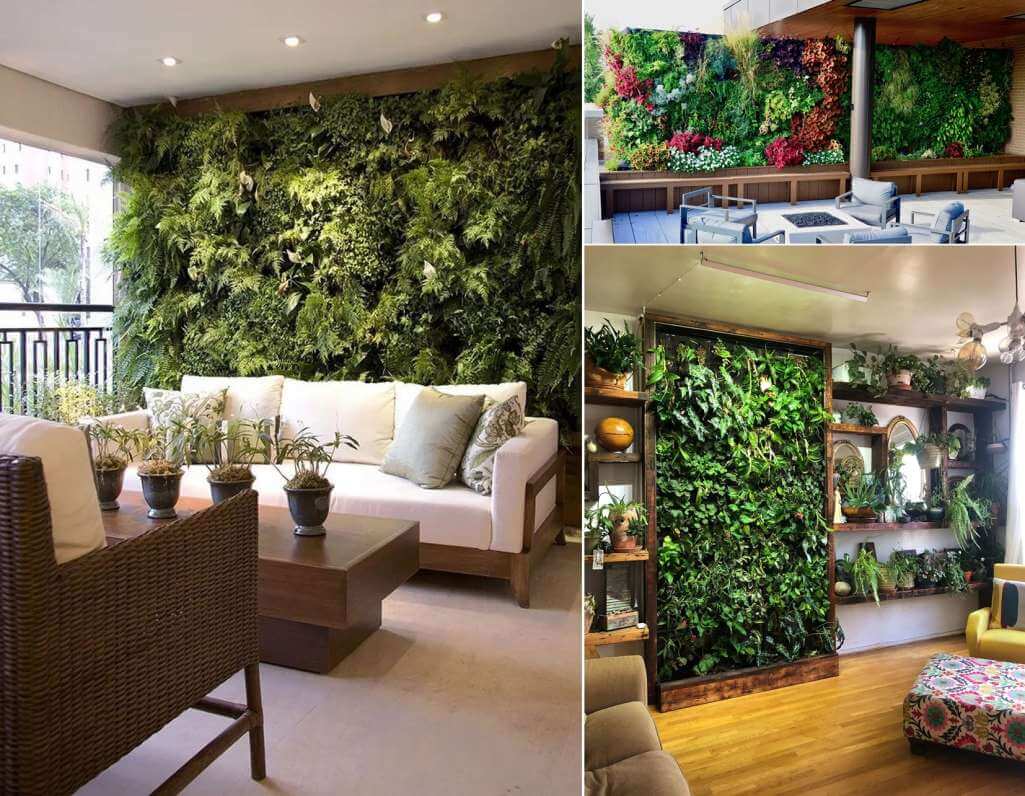
Benefits of Living Green Walls
Simply put, living walls are usually created with modular systems fixed to a wall; they can cover a whole wall or a small section to keep the plants on display all watered and alive. Commercial green wall or panel systems are either soil-based modules, soil-based fabric membranes or hydroponic systems that rely on water and fertilizer fed to.

Benefits of Living Green Walls
Let's have a deeper look at the living green wall's top-10 benefits, one by one. 1. Living green walls purify the air. The plants in a living significantly improve air condition. The wall filters particulate matter from the air, c onverting CO2 into oxygen. Only one m2 of living wall extracts 2.3 kg of CO2 per annum from the air and.

What Are Living Green Walls Benefits & How They're Made
When you see a green wall you're immediately drawn to it. It's alive, it's interesting, and it fulfills our biophilic needs. Plants make places nicer to hang out in, and they also help clean the air. Ambius installed more than 3,000 square feet of large-scale living walls in 2018 at the SoundWaves waterpark at Gaylord Opryland Resort.

What Are Living Green Walls Benefits & How They're Made
A living green wall is essentially a wall built from rows of panels filled with plants. The plants grow vertically using hydroponics hidden behind the wall and are supported by a strong metal frame that can either be free-standing or secured to a wall. Living green walls are also called vertical gardens, green walls, living walls or eco-walls.
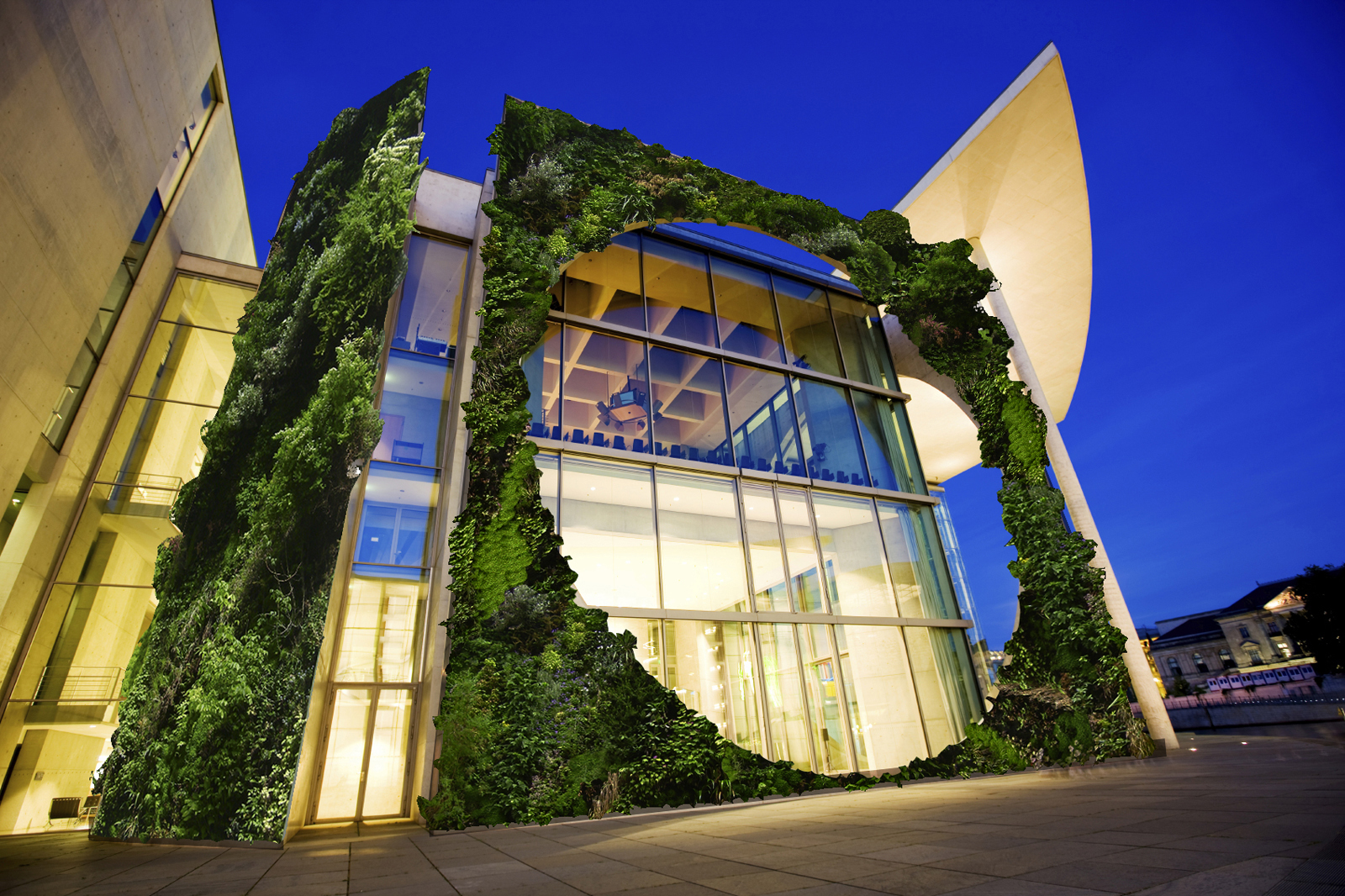
Green Walls/ Living Walls.... All things nice...
A living wall, also known as a green wall or vertical garden, is a structure that incorporates living plants, either growing directly on the wall or in modular panels. Get ready to dive into the greenery-filled world of vertical gardens, where walls come alive with nature's vibrant hues. Our FAQ guide is your ticket to becoming a living wall.
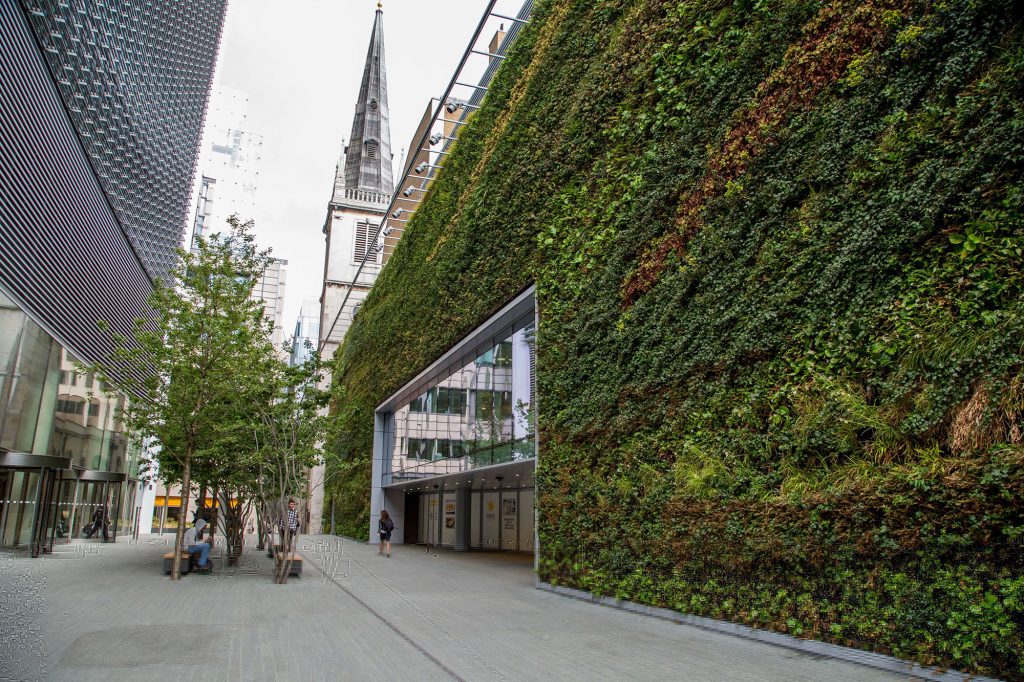
What Are Living Green Walls Benefits & How They're Made
A living wall (also known as a living plant wall, biophilia wall, green wall, or vertical garden) is a vegetative system installed in a vertical orientation mounted to a facade or free-standing structure, usually with an automated irrigation system incorporated. Living walls can be designed for interior or exterior applications.

Living Green Wall to be installed Morning Ag Clips Green interior
A section of one of Patrick Blanc's most famous projects, the 40-foot high and 650-foot long living wall at the Musée du quai Branly. Photo Credit: Jean-Pierre Dalbéra / Wikimedia Commons / CC BY 2.0 Note: Especially in the 2010s, with environmental sustainability rising to the forefront of public thought, these green garden walls became popular with businesses and homeowners alike.

Benefits of Living Green Walls
Green walls can reduce the temperature fluctuations at a wall's surface from a range of 10-60°C (50-140°F) to one of 5-30°C (41-86°F), in turn, limiting the movement of heat between building walls (Minke 1982). They cause this reduction by: Trapping a layer of air within the plant mass. Reducing ambient temperature via evapotranspiration.